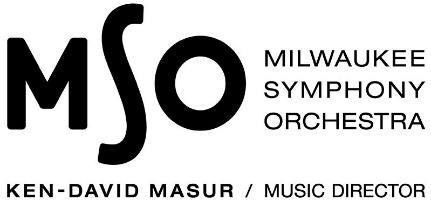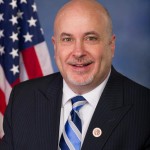Milwaukee Symphony Captures HENRY V for a Powerful Performance
Marking the 400th anniversary of the death of William Shakespeare, the Milwaukee Symphony Orchestra will present two performances of Henry V: A Shakespeare Scenario.
MILWAUKEE, WIS. 02/29/2016– Marking the 400th anniversary of the death of William Shakespeare, the Milwaukee Symphony Orchestra and Music Director Edo de Waart will present two performances of William Walton’s Henry V: A Shakespeare Scenario on March 19 at 8:00 p.m. and March 20 at 2:30 p.m. at the Marcus Center for the Performing Arts. Joining the orchestra for Henry V will be actor Marcus Truschinski of American Players Theatre, the Milwaukee Children’s Choir Voices of ETERNA directed by Marco Melendez, and the Milwaukee Symphony Chorus directed by Lee Erickson. Walton’s work will be paired with Haydn’s “Drumroll” Symphony for a dramatic concert experience.
Enhancing the evening will be Feast of Crispian. The acting troupe will perform in the various lobby spaces of the Marcus Center before the concert and during intermission. Feast of Crispian is a non-profit organization that brings together professional actors with post-deployment service veterans by using basic acting tools and techniques and the powerful words and stories of William Shakespeare to help wounded vets express their thoughts and feelings.
Henry V (1944) was the first of Laurence Olivier’s three Shakespeare films, which also included Hamlet (1947) and Richard III (1955). Walton and Olivier collaborated on all three, with Henry V generally deemed the finest. For the most part, Walton did not need to set aside his usual compositional voice. To add a splash of period color he utilized a few outside sources: a keyboard piece by Giles Farnaby (c1563-1640); a drinking song called “Watkin’s Ale”; three melodies from Joseph Canteloube’s (1879-1951) Chants d’Auvergne; and two old French tunes, including the well-known “Agincourt Song.”
“William [Walton] knocked out the most fantastic score for Henry V,” asserted Olivier in his autobiography, Confessions of an Actor. “Why he never achieved any Oscars for this or any of my Shakespeare films must remain a prime example of the miasmically mysterious conclusions reached by the award-giving institutions.” (Hugo Friedhofer’s music for director Billy Wilder’s The Best Years of Our Lives beat out Walton’s score for Henry V.) “For me,” explained the great actor, “the music actually made the film; otherwise it would have been a nightmare. For instance, the charge scene at Agincourt… is really made by William’s music.”
Two bright Englishmen—conductor Neville Marriner and music author and orchestrator Christopher Palmer—came up with the idea of structuring Walton’s score as a piece for speaker, orchestra, and chorus. This Scenario contains about 90 percent of the complete music, and includes recited excerpts, rearranged in various places, from the play. (For the march that opens “Embarkation,” Palmer used music Walton wrote for a projected, but never-made, ABC-TV series in 1959.)
Symphony No. 103, “Drumroll” by Haydn: Often cited, with some justice, as the father of the symphony and the string quartet, the Austrian composer Franz Joseph Haydn saw both from their beginning to a high level of sophistication and artistic accomplishment. Even though he did not originate these genres, his work paved the way for the larger musical structures of Beethoven and later composers. Highly prolific, the Classical master wrote oratorios (including The Creation), sacred choral music, songs and solo cantatas, over a dozen operas, numerous string quartets and other chamber music, c50 keyboard sonatas, and 104 symphonies.
Haydn’s penultimate symphony takes its nickname from the timpani strokes that open the work. Penned in 1794-95 while the composer was in London, it had its premiere at the King’s Theatre there on March 2, 1795 as part of a Monday-evening series called the Opera Concerts.
ABOUT THE ARTISTS
Edo de Waart enters his seventh season as the sixth music director of the Milwaukee Symphony Orchestra in 2015.16. He also serves as chief conductor of the Royal Flemish Philharmonic and conductor laureate of the Netherlands Radio Philharmonic Orchestra.
He is also much in demand as a guest conductor with the world’s leading orchestras, including the Los Angeles Philharmonic, NHK Symphony Orchestra and Royal Stockholm Philharmonic Orchestra. Following his recent appearance with the Chicago Symphony Orchestra, the Chicago Tribune noted that de Waart: “paid the score, and the orchestra’s venerable Brahms tradition, the compliment of letting the music speak for itself.”
Internationally, de Waart has previously held posts with the Rotterdam Philharmonic Orchestra, San Francisco Symphony, Minnesota Orchestra, Sydney Symphony and Hong Kong Philharmonic Orchestra. He was also Chief Conductor of De Nederlandse Opera.
Edo de Waart’s extensive recording catalogue encompasses releases for Philips, Virgin, EMI, Telarc and RCA. His most recent recordings are Mahler’s Symphony No.1 and Elgar’s The Dream of Gerontius, both with the Royal Flemish Philharmonic. He has also long been an exponent of the music of John Adams, having conducted the first recording of Nixon in China in 1987 with the original cast from the world premiere.
Edo de Waart has received a number of awards for his musical achievements, including Knight in the Order of the Dutch Lion and Honorary Officer in the General Division of the Order of Australia. He was also appointed Honorary Fellow of the Hong Kong Academy for Performing Arts in recognition of his commitment to developing future generations of musicians in Hong Kong.
Marcus Truschinski
Marcus Truschinski is in his 12th season at the American Players Theatre in Spring Green. His past favorite roles at APT include: Algernon in The Importance of Being Earnest, Henry Carr in Travesties, Chris Keller in All My Sons, Tony Cavendish in The Royal Family, and Jim O’Connor in The Glass Menagerie. Closer to home, you may have seen him in The Complete Works of Shakespeare (abridged) [revised] at the Milwaukee Chamber Theatre in the fall of 2014. He also portrayed Sherlock Holmes in the Hound of the Baskervilles at Indiana Repertory Theatre last spring.
Milwaukee Symphony Chorus, Directed by Lee Erickson
The Milwaukee Symphony Chorus, directed by Lee Erickson, has become one of the finest symphony choruses in the country. Founded in 1976 by Margaret Hawkins at the request of the MSO’s second music director Kenneth Schermerhorn, the 150 volunteer members are dedicated to artistic excellence and performances of the highest caliber. The Chorus performs with the MSO throughout each season and also performs regularly at Ravinia with the Chicago Symphony Orchestra. In addition, the chorus is featured on many of the MSO’s recordings, including the MSO Classics digital series.
The 2014.15 season included performances of Mozart’s Don Giovanni, Brahms’s German Requiem, and Orff’s Carmina burana. Chamber groups from the chorus also perform Handel’s Messiah in December. The 2013.14 season included performances of Ravel’s Daphnis et Chloé, Schubert’s Mass No. 6, and Beethoven’s Ninth Symphony.
ABOUT THE PERFORMANCE
Haydn’s Symphony No. 103, “Drumroll”
Walton’s Henry V: A Shakespeare Scenario
Edo de Waart, conductor
Marcus Truschinski, narrator
Milwaukee Symphony Chorus, Lee Erickson, director
Milwaukee Children’s Choir Voices of ETERNA, Marco Melendez, director
Uihlein Hall, Marcus Center for the Performing Arts
Saturday, March 19 | 8:00 p.m.
Meet the Music, Anello Atrium | 7:00 p.m.
Sunday, March 20 | 2:30 p.m.
Meet the Music, Anello Atrium | 1:30 p.m.
Tickets range from $20-$110. Group rates are available. For more information, please call 414.291.7605 or visit mso.org. Tickets may also be purchased through the Marcus Center Box Office at 414.273.7206.
ABOUT THE MSO
The Milwaukee Symphony Orchestra, under the dynamic leadership of Music Director Edo de Waart, is among the finest orchestras in the nation and the largest cultural institution in Wisconsin. Now in his seventh season with the MSO, Maestro de Waart has led sold-out concerts, elicited critical acclaim, and conducted a celebrated performance at Carnegie Hall on May 11, 2012. The MSO’s full-time professional musicians perform over 135 classics, pops, family, education, and community concerts each season in venues throughout the state. Since its inception in 1959, the MSO has found innovative ways to give music a home in the region, develop music appreciation and talent among area youth, and raise the national reputation of Milwaukee.
NOTE: This press release was submitted to Urban Milwaukee and was not written by an Urban Milwaukee writer. While it is believed to be reliable, Urban Milwaukee does not guarantee its accuracy or completeness.






















